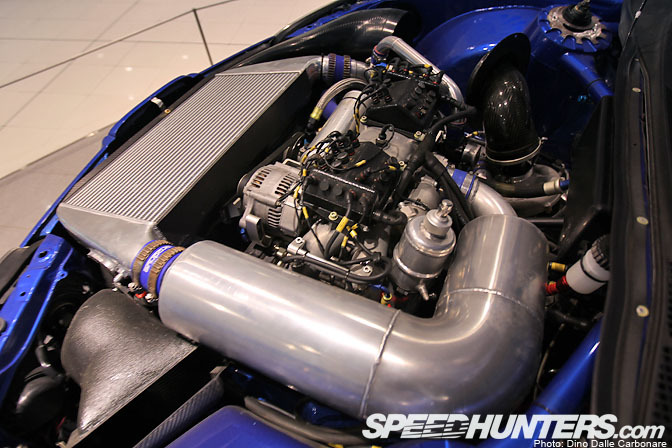What is a CO2 spray for? PH Explains
How dumping carbon dioxide on an intercooler can help maintain, or boost, an engine's output

A carbon dioxide spray is used to reduce the temperature of an intercooler, in a turbocharged or supercharged car by spraying CO2 across its cooling fins. These simple systems, which work in a fashion similar to conventional water-based intercooler sprays, can significantly reduce the temperature of the intercooler.
Doing so can enable an engine's power output to be more easily maintained in arduous conditions or even permit for improvements in output; cooler, denser air exiting the intercooler contains more oxygen, allowing for more fuel to be burnt - producing more power. Reducing the temperature of the compressed air in the intake tract also helps cut the chance of detonation or pre-ignition in the cylinders, helping protect the engine from damage.
These CO2-based intercooler chilling systems are used in aftermarket tuning applications and supplied by companies such as Wizards of NOS, Edelbrock and DEi. They are not expensive, in part due to their comparative simplicity, and often cost less than £400.

How do CO2 sprays work?
CO2-spraying systems are similar to nitrous oxide set-ups and typically consist of a solenoid, a spray bar, a triggering system and - unsurprisingly - a bottle of CO2. The spray bar is affixed to the intercooler and the flow of CO2, typically from a boot-mounted bottle, is regulated by a solenoid.
This solenoid can be triggered manually, via an arming switch and a push button, as is the case in most off-the-shelf kits; more advanced set-ups could, however, trigger the spray based on temperature or load if required.
When the solenoid is triggered, and opens, CO2 is discharged from the spray bar assembly directly into the intercooler's fins. As the pressurised CO2 undergoes a state change from liquid to gas, it cools rapidly and subsequently greatly reduces the temperature of the intercooler.
After a few moments, when the button is released or triggering system deactivated, the solenoid closes and the flow of CO2 is stopped. With the intercooler now chilled, the temperature of the air within falls - and its density rises - which in turn can help sustain or imrpove the engine's output.
Nitrous oxide can also be used in place of CO2 in the system and achieves the same effect, although it's not recommended to tap into an existing nitrous set-up used for boosting the engine's output; this can cause nitrous delivery issues, which could potentially result in far more significant damage to the engine.

Are CO2 sprays really any good?
Claims vary from manufacturer to manufacturer; Wizards of NOS, for example, states that the use of its CO2 spray system can reduce the intake temperature by as much as 80 degrees C.
Similarly, DEi says its system reduces the intercooler temperature by a significant 35 per cent. This, the company suggests, could result in a boost of some 45hp on force-fed petrol engines and up to 65hp on diesels. No specifics are given, mind, and there are obviously countless variables at play - but, regardless, substantial gains could be possible.
In any case, being better able to control the temperature of the intercooler will at least allow for the power delivery and engine output to remain more consistent - and will grant useful protection against detonation.
I don’t know if any modern car with an inter cooler...
You generally get water/air or air/air charge coolers after the turbo or supercharger boosting... so they are after-coolers.
Intercoolers are charge coolers mounted between two separate boost mechanisms. You can even have beforecoolers but these are very rare.

Just one of those instances of terminology evolving; I suspect when multiple compressor stages were just dropped many just continued using the modifier 'inter' (implying between the compressor and the engine), particularly given how the supercharging stage was often integrated into the engine and overlooked by some in those applications. Saab's been calling them intercoolers since at least the 900 in '79, for one.
I've never encountered the term 'beforecooler' (sounds a bit odd, given that it seems to imply 'cooling' uncompressed ambient air with ambient air?) – but intercoolers/charge coolers positioned after the compressor (or compressor stages) were sometimes referred to as 'aftercoolers'. Again, though, that's quite uncommon terminology these days and liable to only be understood by those interested in historic aero engines.
A valid point, though, nonetheless.


(The large diameter ally pipe)
;-)
Gassing Station | General Gassing | Top of Page | What's New | My Stuff



